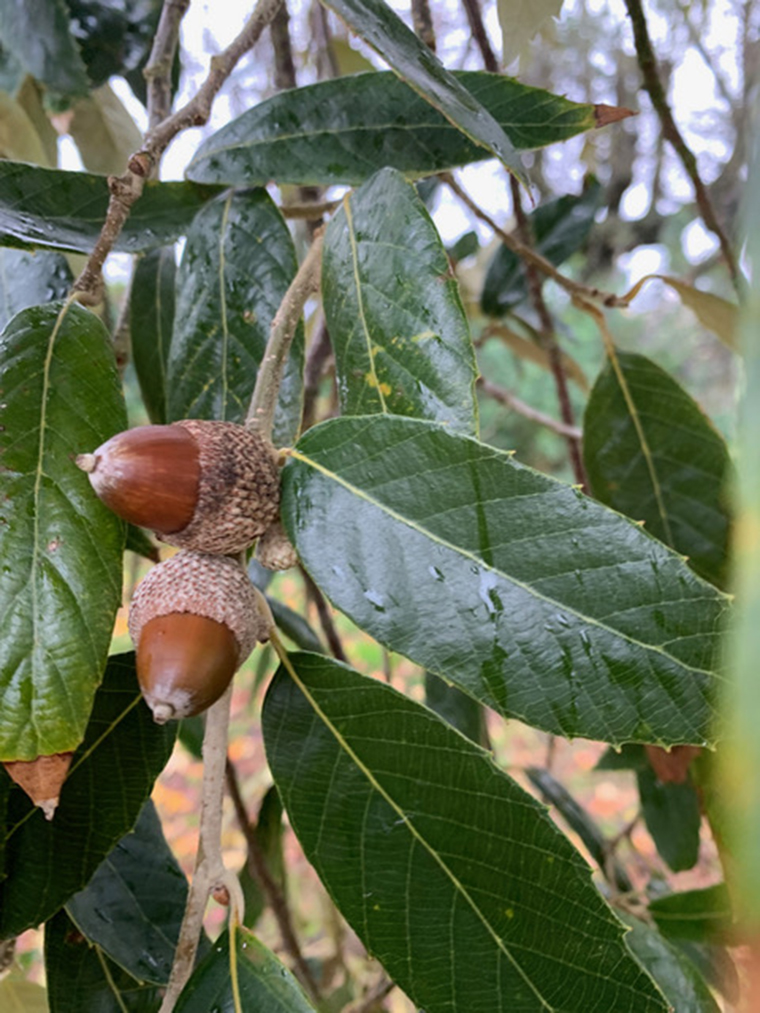Is it time for Martinborough to celebrate again the mighty Himalayan Oak? The tree that connects this town to northwest India and to the late Sir Edmund Hillary.
There are many Himalayan Oaks growing hereabouts, thanks to the imagination and actions of a Martinborough School parents’ group who embraced the tree back in 1998.
These days the school grounds have 10 especially notable specimens along the Grey Street boundary (pictured). Another is thriving in a more sheltered location near the Waihinga Centre – and there will be dozens more in gardens, lifestyle blocks and farms.
In fact, this oak variety has a small but ardent following around Martinborough (and other pockets of New Zealand) because of its extraordinary resilience, fast growth, and benefits to soil condition and neighbouring plants.
The Himalayan Oak, also known as the Banj or White Oak, is an ever-green hardwood originating from the broad Himalayan region of India, Nepal, Pakistan and Myanmar. The tree prefers free draining soils but, as we have shown, grows as well in hard, dry conditions.
South Wairarapa locals can thank Annabel Clayton and other parents in the former Friends of Martinborough School group for locating a supply of seedlings, organising their sale as a school fundraiser and putting spades into children’s hands.
All this in the winter and spring of 1998 – and to mark the occasion, Annabel and John Porter enticed Sir Ed and Lady June Hillary to Martinborough for a celebratory weekend that September.
The guests helped children plant those 10 school boundary trees. Of course, Sir Ed had a huge connection with the Himalayan region through his 1953 conquest of Mt Everest and ongoing medical and educational projects in Nepal.
That weekend 27 years ago and Martinborough’s embrace of the Himalayan Oak are still warmly remembered by David Cranwell – the tree breeder and horticultural consultant who worked with Annabel to introduce them to the town.
Hawkes Bay-based David was drawn to the tree while on a World Bank-sponsored project to help develop India’s apple industry in the early 1990s. After living and working in northwest India, he imported acorns and over the decades since, has sold thousands of seedlings in this country.
His Himalayan Oak Trust – Sir Ed was the Trust’s first patron – has channelled around $200,000 from New Zealand into conservation and education in that part of India (and sales in Martinborough all those years ago contributed).
“I took the Himalayan Oak on when I saw what it was doing for soil retention, ecosystem resilience and timber supply … and after years of research since in New Zealand, I’m certain it’s a tree which could be incredibly valuable here,” David says from his property overlooking the Tukituki Valley.
Typically, Himalayan Oaks have deep roots that help retain soil and bring water up towards the surface layers (“hydraulic lift”) to provide an ideal nursery environment for other plants, including New Zealand’s slower growing natives. The tree is renowned for its resistance to disease and to forest fire because the bark is so hard.
David says the timber, with a 35-40 year growing rotation, is better than pinus radiata and other oak varieties for structural and decorative uses in construction. It could be planted for permanent forestry that includes selective logging and companionship with natives.
“This tree is very resilient and fast growing in dry soils, and that’s great also for carbon sequestration. We really should have some scientific assessment of its carbon rating in New Zealand.”
Come next June, David will be out again collecting acorns off Himalayan Oaks for his next propagation drive (see his picture from winter 2025).
Will Martinborough tree owners and enthusiasts be doing the same?
Email me to report on your Himalayan Oaks or if you want more information from David Cranwell, at martin@freeth.co.nz and see www.himalayanoaks.com



